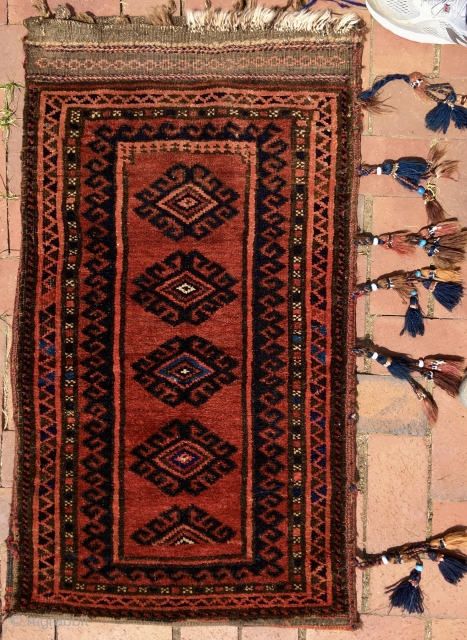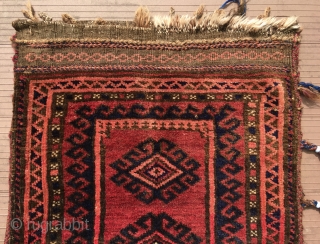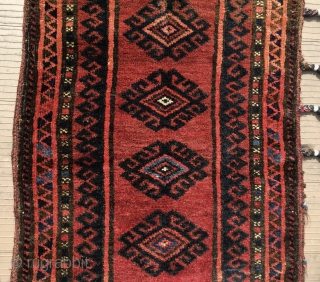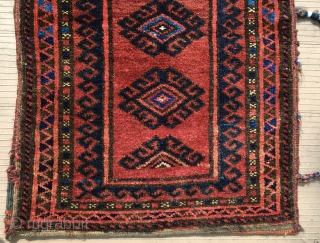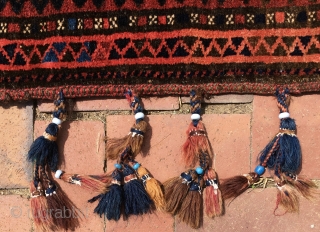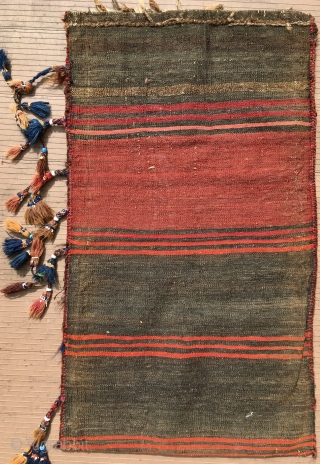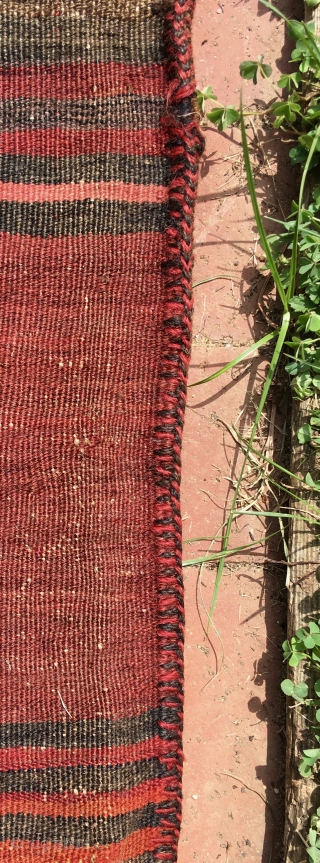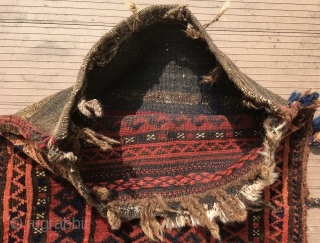Back
a “Baluch” balisht (bag), complete with its flatwoven back, most likely from the Seistan district of Baluchistan—the region surrounding the point where the Afghanistan-Pakistan border meets the Iranian border. In very good condition but has had some use in the culture where it was woven, probably early in the 20th Century. Dimensions are 23 inches by 40 inches (59 cm x 102cm), not including the tassels. The tassels are typical of those seen on Baluch weavings of this region—beginning with a thick plaited cord with a thick wool tassel formed around it, and with three thinner plaited cords extending from the center of this larger tassel, each of which ends in another tassel, and typically incorporating white or blue glass beads, and sometimes small mollusk shells or buttons. The opening across one end has closure loops on both sides, made of plaited cords of brown wool. Some of these are intact and some worn through. Wear with fraying at the fold at top of front.
price:
please ask
- Home
- Antique Rugs by Region
- Category
- Profiles
- Post Items Free
- Albums
- Benaki Museum of Islamic Art
- Budapest: Ottoman Carpets
- Gulbenkian Museum
- Islamic Carpets. Brooklyn
- Islamic Textiles. Brooklyn
- Konya Museum: Rugs
- MKG, Hamburg
- MMA: Caucasian Carpets
- MMA: Mamluk Carpets
- MMA: Mughal Indian Carpets
- MMA: Ottoman Carpets
- MMA: Safavid Persian Carpets
- MMA: Turkmen Rugs
- McCoy Jones Kilims
- Ottoman textiles. Met
- Philadelphia Museum
- Rugs and Carpets: Berlin
- Seljuqs at the Met
- TIEM, Istanbul: Carpets
- V&A: Classical Carpets
- Vakiflar Carpets: Istanbul
- Baluch Rugs: Indianapolis
- Gallery Exhibitions
- Jaf an Exhibition
- Alberto Levi Gallery
- Andean Textile
- Christie's London: 2016
- Francesca Galloway
- HALI at 40
- ICOC Washington, DC 2018
- Jajims of the Shahsavan
- London Islamic Week April, 2018
- Mongolian Felts
- Navajo Rugs: JB Moore
- Persian Piled Weavings
- SF Tribal & Textile Art Show 2020
- SF Tribal 2019
- Sotheby's: C. Alexander
- Turkish Prayer Rugs
- Turkmen Main Carpets ICOC 2007








